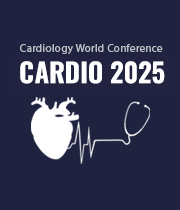Title : Prevalence and management of stroke in resource-limited settings: A retrospective cohort study at the Yaounde Emergency Centre, Cameroon
Abstract:
Background: Stroke is a major public health concern in sub-Saharan Africa, where its rising incidence is driven by the epidemiological transition and the high prevalence of cardiovascular risk factors. Despite medical advancements, the comprehensive and specialized management of stroke remains inadequate in low- and middle-income countries (LMICs). This is due to multiple factors, including delayed diagnosis, limited technical resources, a severe shortage of dedicated neurovascular units, and other systemic challenges that will be further explored in this article. This study is based on a comprehensive analysis of clinical management at the Yaounde Emergency Centre (YEC) which will attempt to portray highlights the challenges related to stroke management in sub-Saharan African countries.
Methods: We carried out a retrospective descriptive study over a period of one year going from the 01st January 2024 to 31st December 2024 at the Yaounde Emergency Center (YEC). We used the emergency department registers, and looked for all patient files seen and registered at the YEC and treated for Stroke- like conditions. We excluded any incomplete patient files and all cases with clear alternative diagnoses that explained the neurological deficits. The extracted data were entered and managed using a generated google sheet. The demographic characteristics of our population, the risk factors, the symptoms and signs, the clinical presentation, the imaging used, the different types of strokes found, the different vascular regions affected, the different treatment and the outcomes of patients were extracted into an excel file and then analyzed using R Statistics.
Results: One hundred and eighty-nine files were included. The age ranged from 31 to 92 years. There were 52,9% of women. We found that CT scans were realized for 84.65% of patients (n=160), 14.81% of the patients had no neuroimaging realized (n=28). The most branches affected were the middle cerebral artery and its branches 22,22% (n=42), while 51.32% of our files had no indication on the vascular region affected. The majority of patients (67.2%) were discharged in less than a week within hospitalization (n=127). 55.03% were discharged after partial recovery (n=104) and 24.87% of these patients passed away (n=47).
Conclusion: This study highlights the critical need for stroke and cardiovascular disease prevention while emphasizing the importance of establishing dedicated stroke units for optimal patient care.



